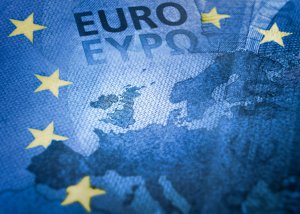Liquidity is not a problem within the Eurozone, insisted European Central Bank president Trichet last Monday. But the markets didn’t believe him. The question now is whether the announcement last Thursday of a coordinated central bank intervention—by the ECB and also the Swiss National Bank, Bank of Japan, Bank of England, and the Fed—gives more reason to believe.
The biggest reason for doubt is the Fed. Everyone except the Fed has announced unlimited dollar offering, but no one except the Fed can create new dollars. The Fed has reopened its liquidity swap facility, and so in principle must be prepared to meet demand. But in practice it would face considerable domestic political opposition were it to do so. (The “End the Fed” brigade is no doubt already mobilizing.)
So let us suppose that the Fed cannot directly serve as international dollar lender of last resort, as it did in the aftermath of Lehman. Is there another way?
The Eurodollar market was born to provide a way for dollar lenders and dollar borrowers to find each other outside the reach of the U.S. monetary authority. It is the Eurodollar market that European banks are having difficulty tapping in order to fund their dollar assets, and that is whole reason behind the recent central bank announcement.
Foreign central banks already hold about $100 billion deposits at the Fed, so that’s available for them to lend. But the more important point is that their dollar lending is not limited to their dollar reserves, any more than a private bank’s lending would be. Private banks lend term Eurodollars by creating term Eurodollar deposits, and so can public central banks. All that is required is that the ultimate dollar lenders find central banks acceptable as counterparties.
Just as with private banks, reserves do not fund lending so much as they absorb temporary imbalances between cash inflow and cash outflow. Viewed in this way, $100 billion is a sizeable fractional reserve, especially so given the backstop of the Fed’s swap facility.
The point is that QE3 is happening without any necessity for the Fed balance sheet to expand by a single dollar. It is happening on the balance sheets of other central banks. Operation Twist, designed to drive longer term Treasury yields lower, will help by making foreign dollar liabilities more attractive.





